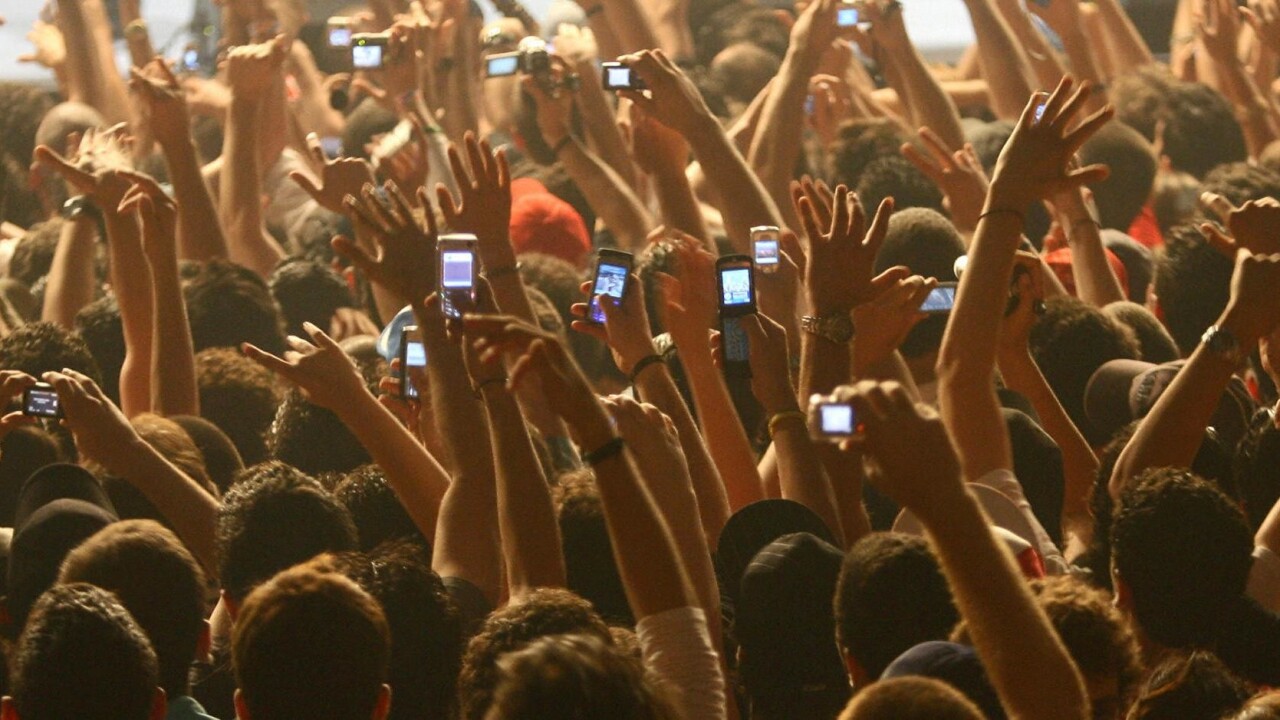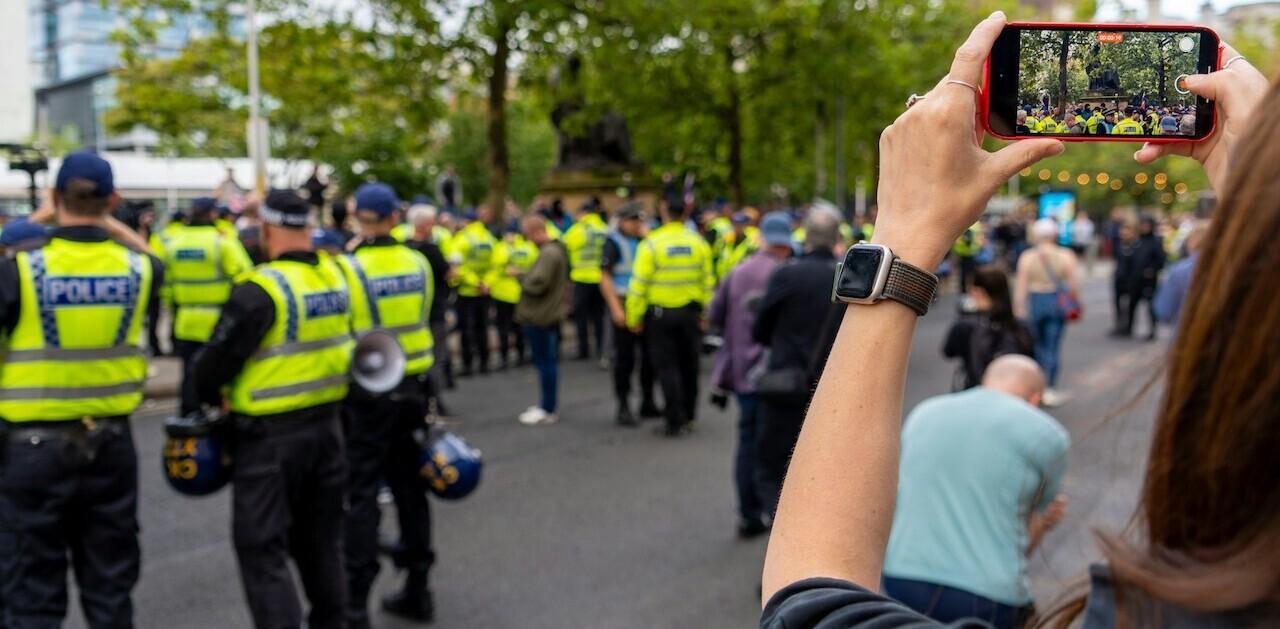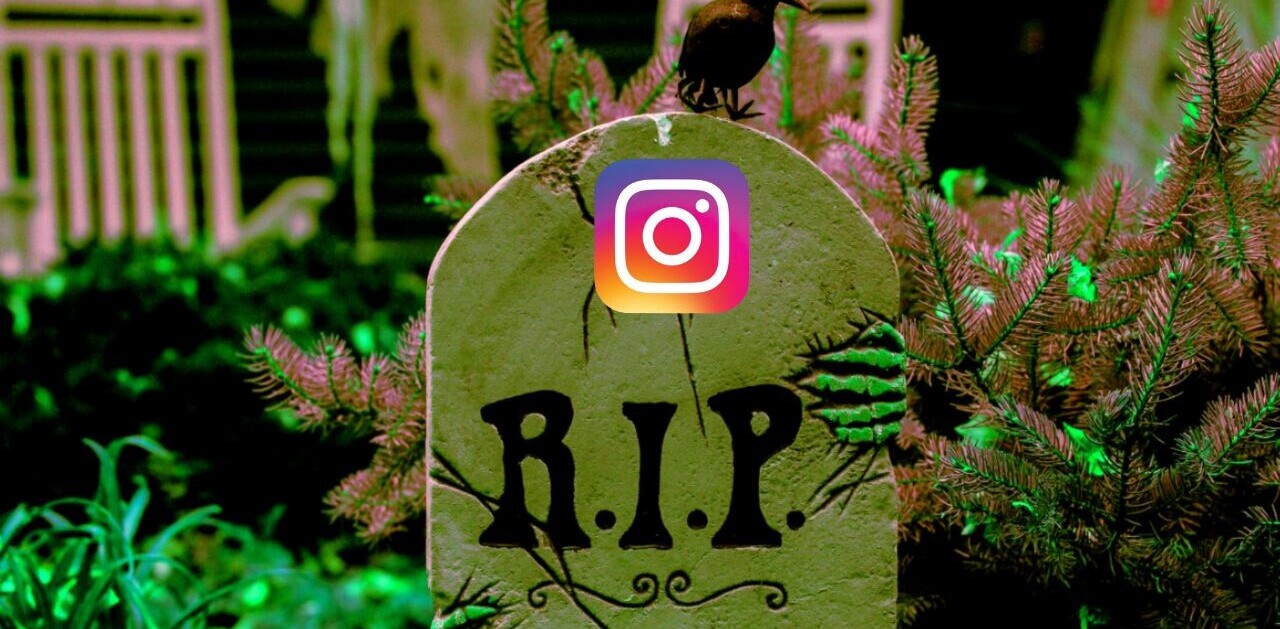
“If you put your cameras down you might be able to live in the moment,” chided Ian Brown, frontman of iconic Mancunian indie band The Stone Roses.
Those were among the first words uttered by Brown during the band’s first comeback gig in May 2012, after a 16-year hiatus. But the singer wasn’t so much concerned about Polaroids, point-and-shoots or any other kind of camera that might have proliferated ‘Roses gigs back in the day – what he was referring to was iPhones, Androids and every other kind of smartphone.
If you think this was simply the ramblings of a worn-out, has-been rock star without so much as a finger-nail on the pulse of the zeitgeist, you’d be wrong. Less than a year later, New York rock band Yeah Yeah Yeahs echoed these sentiments via a sign for arriving gig-goers that read:
“Please do not watch the show through a screen on your smart device/camera. Put that shit away as a courtesy to the person behind you and to [band members] Nick, Karen and Brian.”
Then, a month ago, Mercury Prize-winning British quartet Alt-J began trialing new technology designed to encourage fans to keep recording equipment in their pockets, and steer eyes towards the stage and ensuing live performance.
There’s a rising tide against the infiltration of smart devices at live shows, and for good reason.
Bands and other performers are looking to regain the full attention of their audience, while promoters and others with a vested interest in artists’ affairs are keen to profit from this insatiable desire to ‘relive’ an event once it’s come to a close. If they can’t fight it, they’d may as well embrace it and try and make a few bucks out of it with legitimate services.
Posterity
Having been a serial gig-goer for many years, I too have been known to whip out my mobile phone or digital camera and capture some footage or a few photos for posterity. Without even a hint of exaggeration, I can say that 99% of the time I’ve never looked at my ‘handiwork’ more than once, simply because they were never of a good enough quality to accurately reflect the gig as I remembered it. So why did I do it? I think primarily because it became habitual and, well, because I was able to do it.
A big turning point for me came back in 2010 when The Pixies played at The Brixton Academy in London. On my way in, I noticed a stall that offered live audio recordings of the gig for around £15 ($20). I assumed I would pay up front and receive a disc in the post a week or two later but, alas, I was wrong.
I did pay on the spot, but the CD was available within about 20 minutes of the show ending, meaning that by the time I’d suffered the painfully long queue to regain my jacket, a brand-spanking new, professionally recorded live album – including cover art – was in my hands. For someone who went to maybe 20-30 gigs a year, this was the first time I’d ever seen this, and it was a revelation. Sure, it was audio-only, but it made me realize how much better a professional recording is – it brings actual value to the experience.
After a little bit of digging, I soon discovered that a company called DiscLive had been offering such a service since the turn of the century, teaming up with the likes of Billy Idol to sell CDs immediately after they left the stage. And in more recent times, bands such as The Red Hot Chilli Peppers were also selling live music downloads of all their gigs, though in their instance it was a few days after to allow proper professional mixes to be carried out.
But this still isn’t all that common at gigs. While some bigger bands do release official videos of their gigs, usually the only way to relive a night is through buying or downloading something recorded by a fellow fan. There’s clearly a market for live music recordings, and there’s an evident paradigm between live-music bootlegging (audio or video) and studio-recorded music piracy.
Napster yins, Apple yangs
When Napster arrived on the scene back in 1999, the music industry didn’t know what hit it. Although it wasn’t the first peer-to-peer file-sharing service by a long stretch, it was the first to gain a reputation specifically for music downloads via a user-friendly interface. And all this at a time when the Internet was really starting to gain momentum in homes, offices and universities around the world – the timing could not have been more perfect.
But Napster, in its original guise at least, ultimately fell foul to the laws of the land and was forced offline under the corporate heft of the music industry. Napster just made it way too easy for folk to share copyrighted music.
But for every yin, there’s a yang. Napster also heralded a digital music revolution that saw the dawn of mp3 players, iTunes and Spotify. By giving the music-loving public an easy conduit to downloading or streaming music on-demand, this went some way towards restoring order.
However, this only really applies to studio-recorded music. If you want to relive that special night at New York’s Bowery Ballroom, San Francisco’s Fillmore or London’s Brixton Academy, there’s still the same-old problem as before. YouTube kind of fills a void here, but you’ll no doubt agree that 90% of the recordings are plain awful. This is changing though.
Technology brings power to the people
In days gone by, anyone wishing to bootleg a gig would have to smuggle in some fairly chunky equipment. The advent of the smartphone era empowered anyone to be a have-a-go bootlegger, but it’s only in recent times where devices have been of sufficient quality to bring real value to those watching online via YouTube and other platforms. I mean, the Nokia N8 was used to produce a whole feature film.
Check out the quality of this Trans-Siberian Orchestra concert clip, shot on a Nokia Lumia 920. The sound is really quite excellent, and helps highlight why Nokia is keen to stop other manufacturers using its microphone technology:
http://www.youtube.com/watch?v=PiVio1b_vfU
Ignoring the fact that this particular clip is shot from distance, just think how easy it would be to record a fairly good multi-angle video. Three or four friends positioned in different parts of an auditorium, each armed with a high-spec smartphone, could produce a high-quality video of any show. Here’s how good a close-up video can look with the Lumia 920 – this is shot in 1080p:
There’s already the software to easily stitch together such content too. Vyclone (previous coverage) for example, lets users sync and edit multi-angle videos directly from their mobile phones. It only works with footage captured simultaneously which is perfect for gigs, and it uses the longest audio track from the available videos as the source, before normalizing the rest of the audio to create a sense of cohesion.
The technology is already there for seriously good fan-shot concert videos, and the more this technology improves and proliferates, the more this will cause headaches for those with a direct financial interest in live performances. As things stand, many venues ban professional-grade recording equipment – so we’re talking optical zoom lenses here. But it will be near-impossible for auditoriums to ban smartphones, which is why we’re now seeing the beginnings of a counter-response.
Thwarting bootlegs
If the technology is readily available for fans to capture quality bootlegs – both audio and video – the technology is also there for the bands themselves to capitalize on. Lively was recently debuted at a gig by The Lonely Forest in Seattle. Gig-goers downloaded an app to their mobile phone, and they could buy an audio-only recording of the gig, sourced directly from the mixing desk, for $4.99. Alternatively, they could pay $9.99 to include video, which was delivered (online) the next day. Take a look at the promo video for yourself.
Dean Graziano, Lively’s CEO and founder, tells us that the two-tiered service is all about helping the company scale. Lively Audio Manager is its artist-focused product that pretty much lets any live performer offer their fans live (audio) recordings during the gig. After Apple and Google take their 30% in-app purchase fees, any remaining profits are split between the artist and Lively, 70% and 30% respectively. The only investment a performer needs to make is in an Apogee Duet audio interface and an iPad, which integrate with Lively’s iOS app.
It really is a fantastic set-up, one that automates most of the process.
With video, however, things aren’t quite so straightforward, given that the venue must be kitted out with suitable equipment, lighting and all those humans needed to operate it. This is usually beyond a band’s direct control, which is why Lively is having to partner directly with venues to create ‘Lively Enabled Venues’. This means that a Lively Enabled Band must play at a Lively Enabled Venue for the full audio/video package to be available.
“Although, with our ‘Lively Enabled Venue’ go-to market approach, we do have a slick and somewhat scalable approach, albeit slower and not as easy as our Lively Audio Manager-self-service-automated approach,” says Graziano.
“We do believe capturing audio is very valuable too, and we have some other cool features coming that will put some visuals against the audio, such as crowdsourced pictures from the show, slideshows and so on,” he continues.
What Lively is doing is excellent, even though enabling enough venues with professional video equipment could hamper its growth. This is an issue that could be faced by a similar service called Soundhalo, which we noted worked with Alt-J at its Brixton Academy show in London. Soundhalo also lets fans download videos of the songs directly to their smartphones soon after they’ve performed.
Don’t fight it, feel it
These technological advances are a win-win for music fans – they can leave a gig with the entire show recorded to their mobile phone, while doing just what Ian Brown suggested by “living in the moment”. But it’s not without its flaws.
For this to be effective, we’ll need to see such technology rolled out at many more gigs – the cost of having cameras and the associated resources at smaller live shows may preclude many bands and venues from adopting it, especially if they don’t know in advance whether fans will actually be willing to pay for it.
Plus, as we’ve already seen, smartphones are getting increasingly ‘professional’ in their recording capabilities, so fans may be reluctant to pay $10 for a video when they can throw all their self-shot clips in a giant cloud-based melting pot and be served up with a ready-made bootleg video for free. If, that is, they’re prepared to hold their arm in the air for the duration of a gig.
That said, they may not need to. Consider a 5,000 sell-out gig featuring a band that plays 12 songs. All you really need is 2 or 3 different people to commit to recording each song, which would amount to around 35-40 individuals for a whole gig – and it’s here where things really start to get interesting.
Fast-forward three or four years to when nearly everyone has a Nokia Lumia 920-quality smartphone. There’s a legitimate business to be had through actively seeking fans who are willing to participate in filming a gig. They commit through an online platform, registering the kind of handset they own, and what we then have is a crowdsourced, fan-filmed concert. Heck, the audience could even be paid for their efforts, depending on how many fans subsequently buy the recording. This also removes any risk from bands and promoters who are reluctant to commit resources to filming something with no guarantee of making money.
One Irish startup is already offering a similar service. Dublin-based 45sound connects fan-recorded videos with sound captured directly from the mixing desk, while throwing in some background ‘crowd’ audio to make it sound authentic. Check out this recording which uses the original audio:
Now, compare it with the 45sound-powered incarnation. The difference with decent audio in a live video is immeasurable.
Why combat the power of the crowd when it can be harnessed instead? What 45sound is doing is fantastic – it gets bands on board and combines their technology with that already in the audience. But it would be even better if they could organize the crowd into optimum filming positions, and ensure they’re using the best cameras/smartphones to improve the visuals too.
However this all pans out, we’re really starting to see some exciting stuff coming to the fore. As someone who loves to listen back to concerts after the event, I’d like to see more collaboration between fans, bands and venues to find the best way of preserving live shows for posterity.
Feature Image Credit – AFP/Getty Images
Get the TNW newsletter
Get the most important tech news in your inbox each week.





